Shooting Svema 64 at Dusk
Slowing Down in Capitol Hill & West Seattle
✍️ • 🕑 Mid-February 2023 • Series: Steve in Seattle • Tags: film photography • black and white photography • slow film • Places: Emma Schmitz Memorial Overlook • Cal Anderson Park
Around when I decided to sign up for time class last February, I decided I was going to try to shoot some lower ISO film. By this, I mean, film that is less sensitive to light, or, film that requires slower shutter speeds in order to get a similar final exposure.
I actually purchased a few rolls, which I will gradually get around to shooting. This one is Svema 64, which is actually one of the faster (and probably more sensible) slow rolls that I picked up.
Svema was a large film producer for the Soviet Union. After the fall of the Soviet Union, their Ukraine-based equipment was picked up by another company, Astrum. Their films seem to be in short supply these days, and I wish them the best considering the ongoing war. Mine was a roll of 24, cut from a bulk roll by the Film Photography Project.
I loaded it in the Ricoh 35 ZF, a fixed lens viewfinder camera. Mine has a broken meter, so exposure is done fully manually.
My main goal was to try getting some longer exposures by the Puget Sound, but I started out with a few snaps in Capitol Hill, starting on 15th Ave. I used a cable release and a mini tripod.
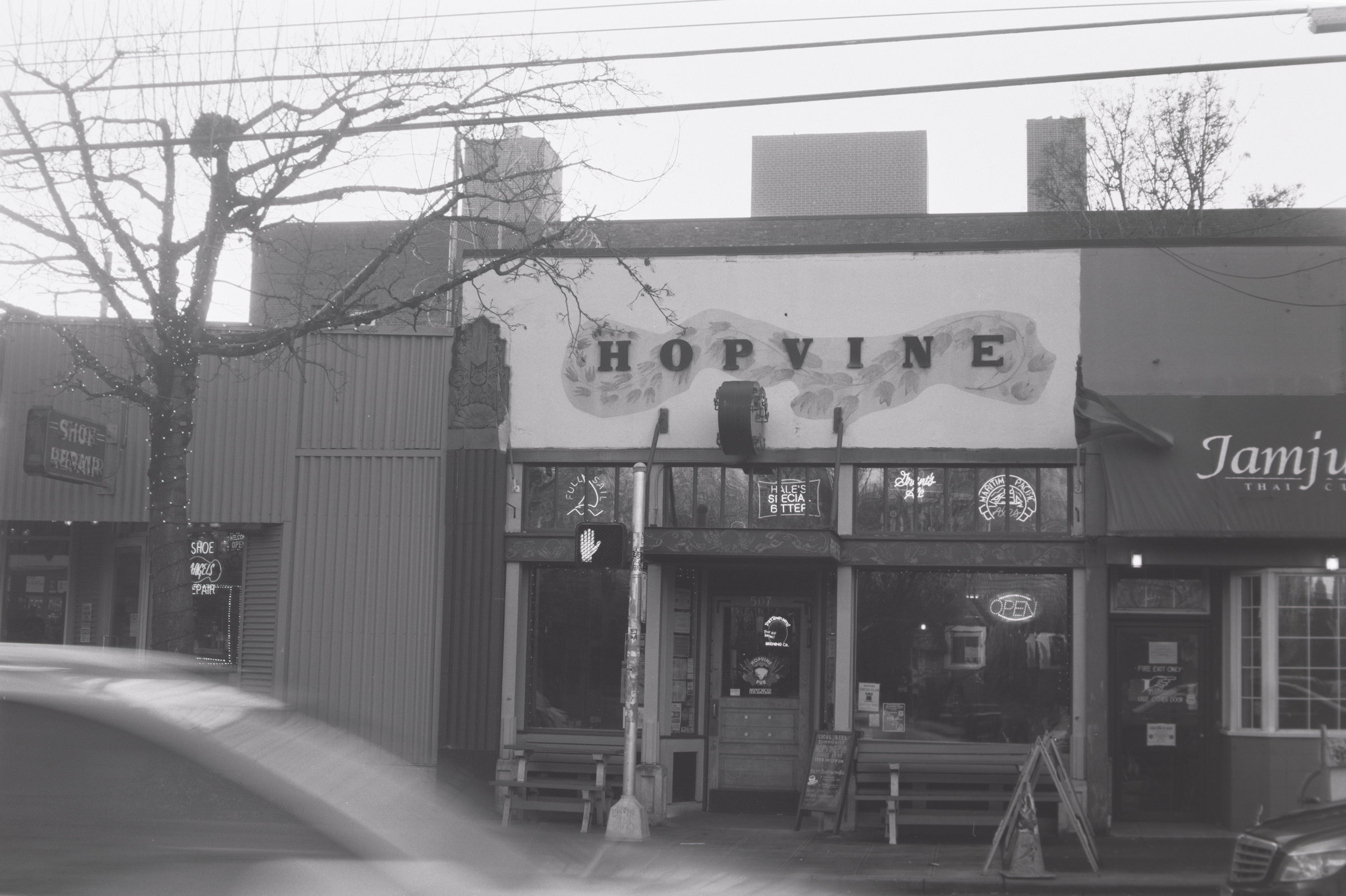
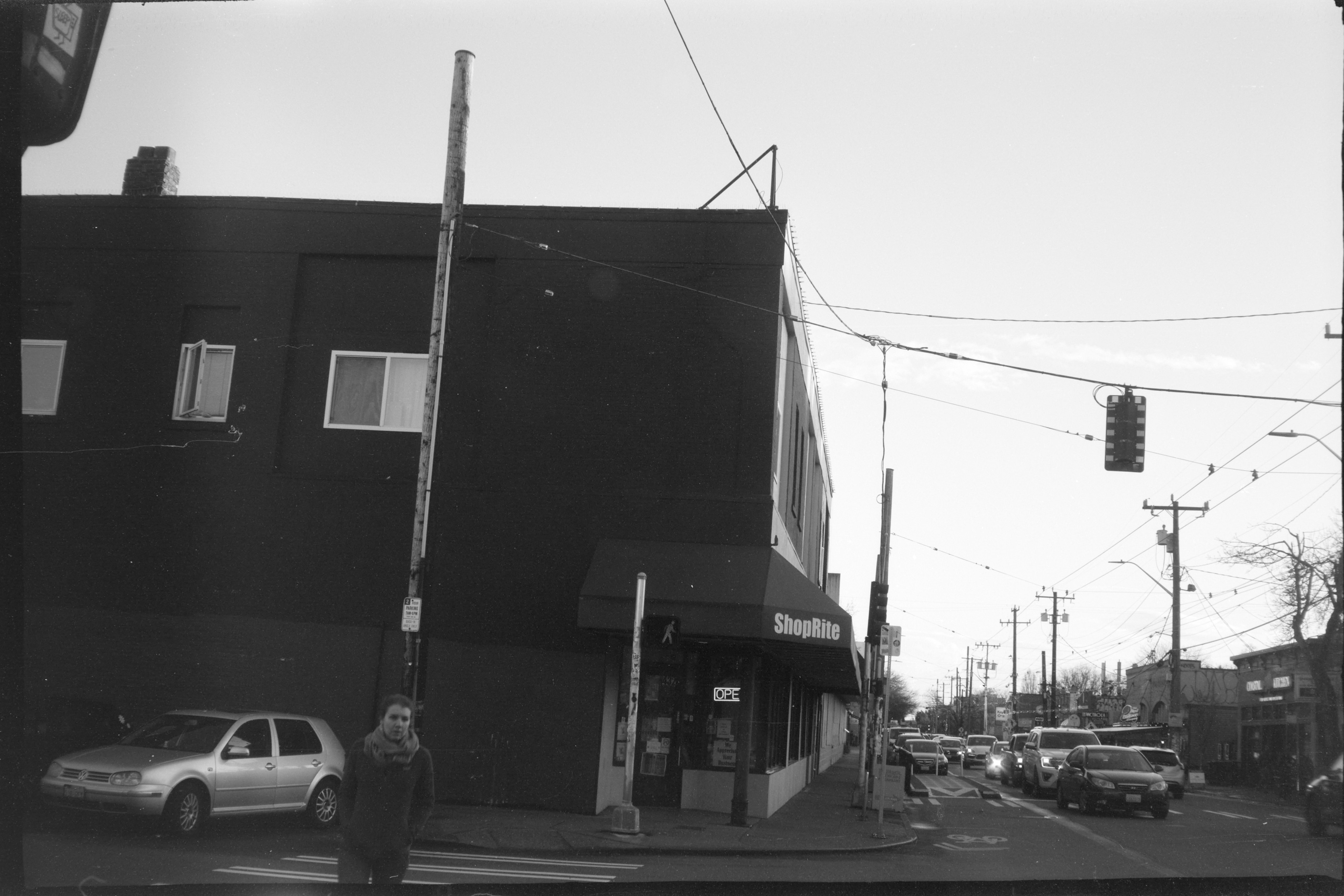
(Some of these scans are a bit half-assed. Please, forgive me. 😆)
Cal Anderson Park is one of my favorite parts of Seattle.
I’ve taken many photos of its fountain already. These ones can get added to the pile.
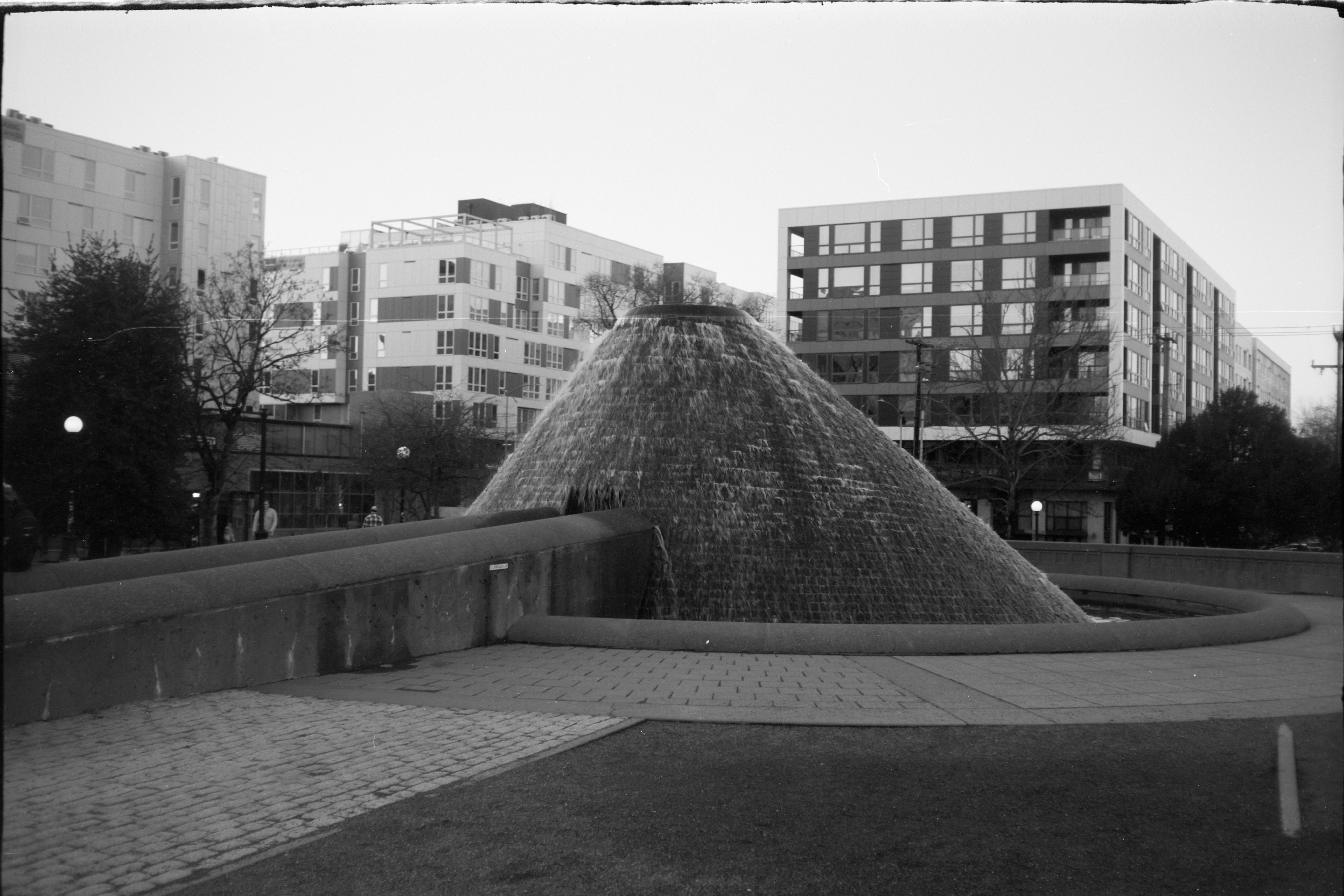
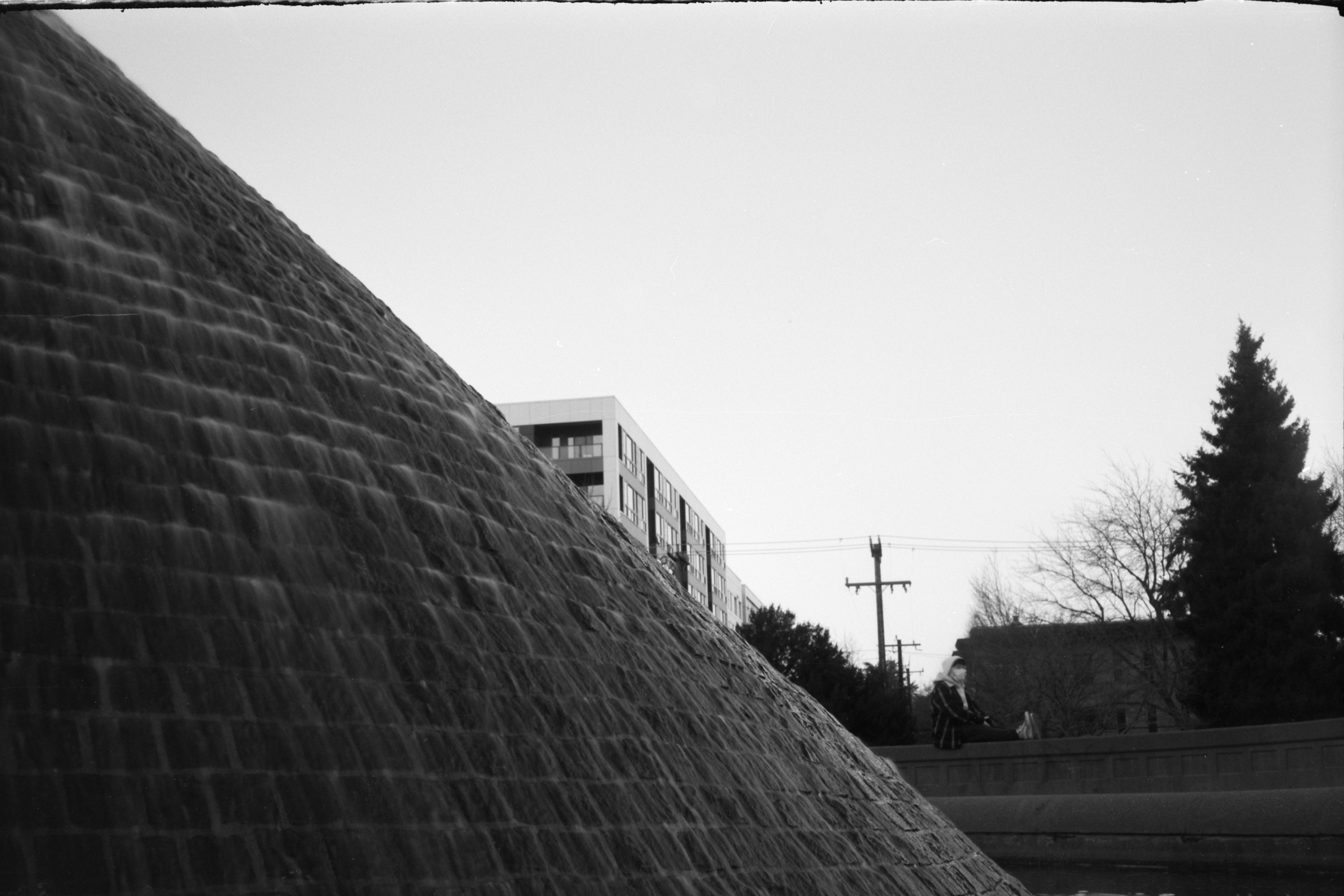
Because I was using the mini tripod, framing was limited to places where I could already position it on a surface. If I used a full size tripod, I’d have had to lug it around, but I could have gotten much more interesting photos.
Later that week, I finally did go out with a tripod, to the Emma Schmitz Memorial Overlook.
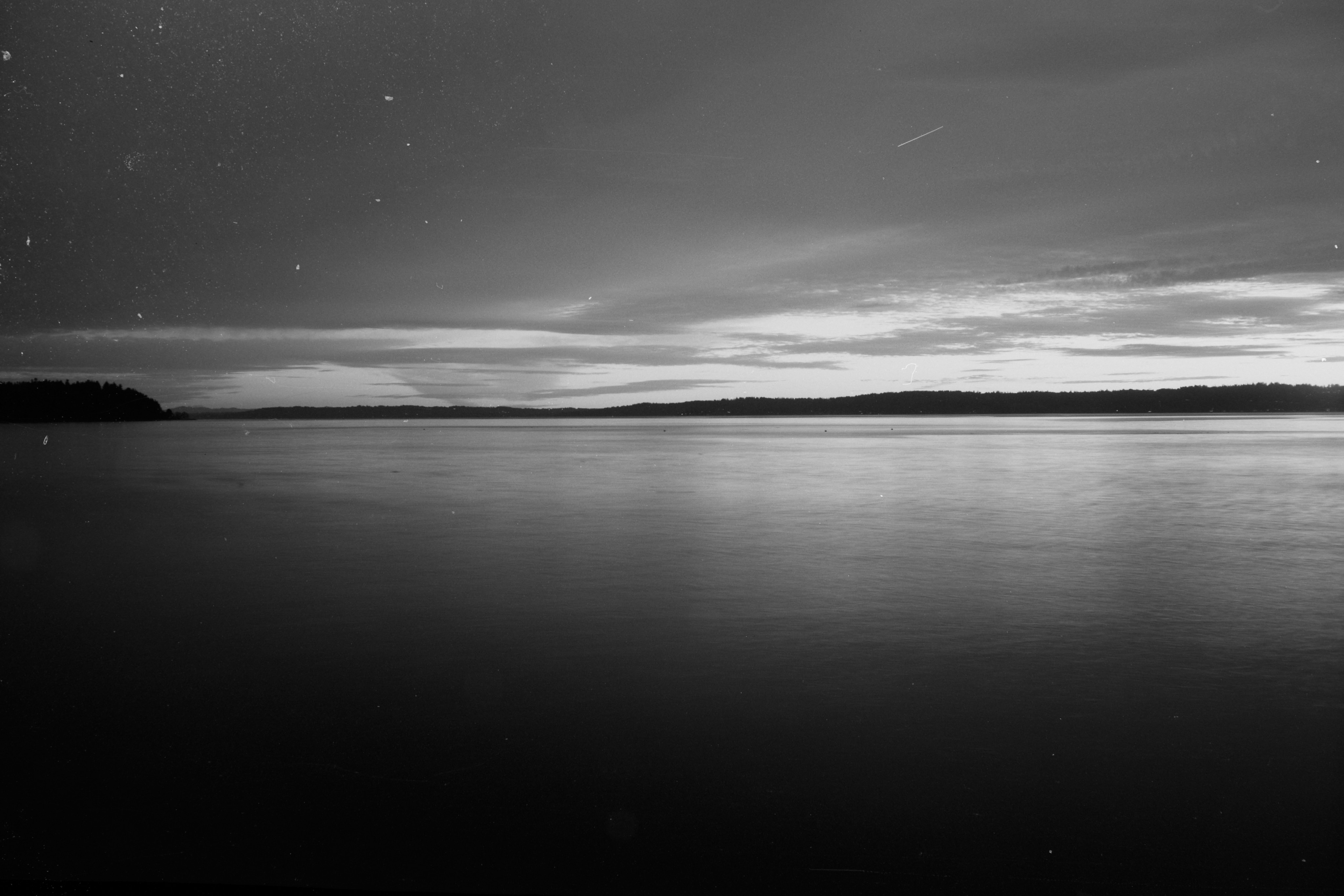
I haven’t done that much long exposure photography, and certainly I haven’t done any on film, so I’m pretty pleased by these results.
If there’s anything I’d change about the last two photos, it might actually be the focal length. It’s wide enough, and the sound is large and close enough that comparatively the mountains in the distance are made to look smaller than they are.
I couldn’t change my lens, but I could look for other types of photographs…
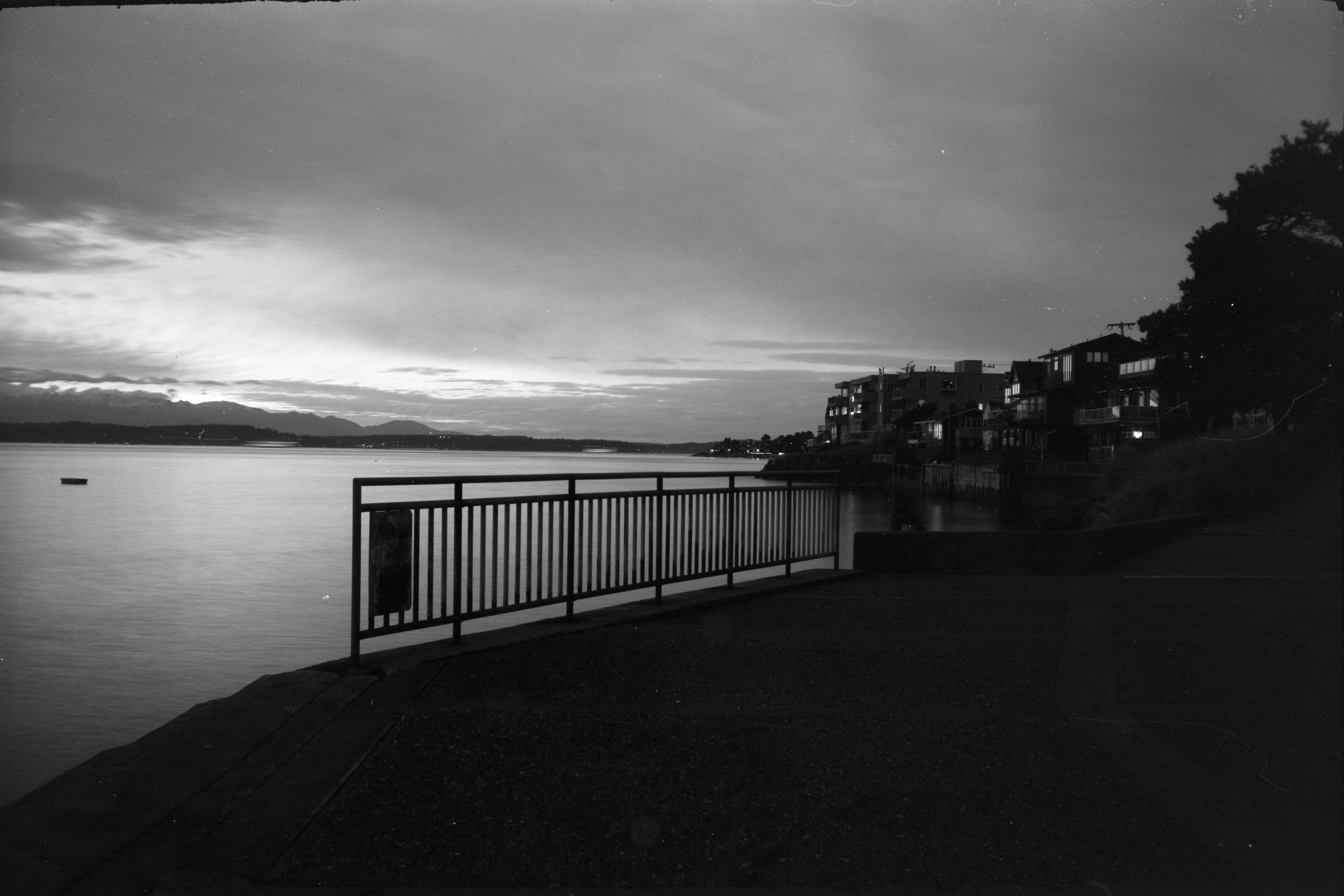
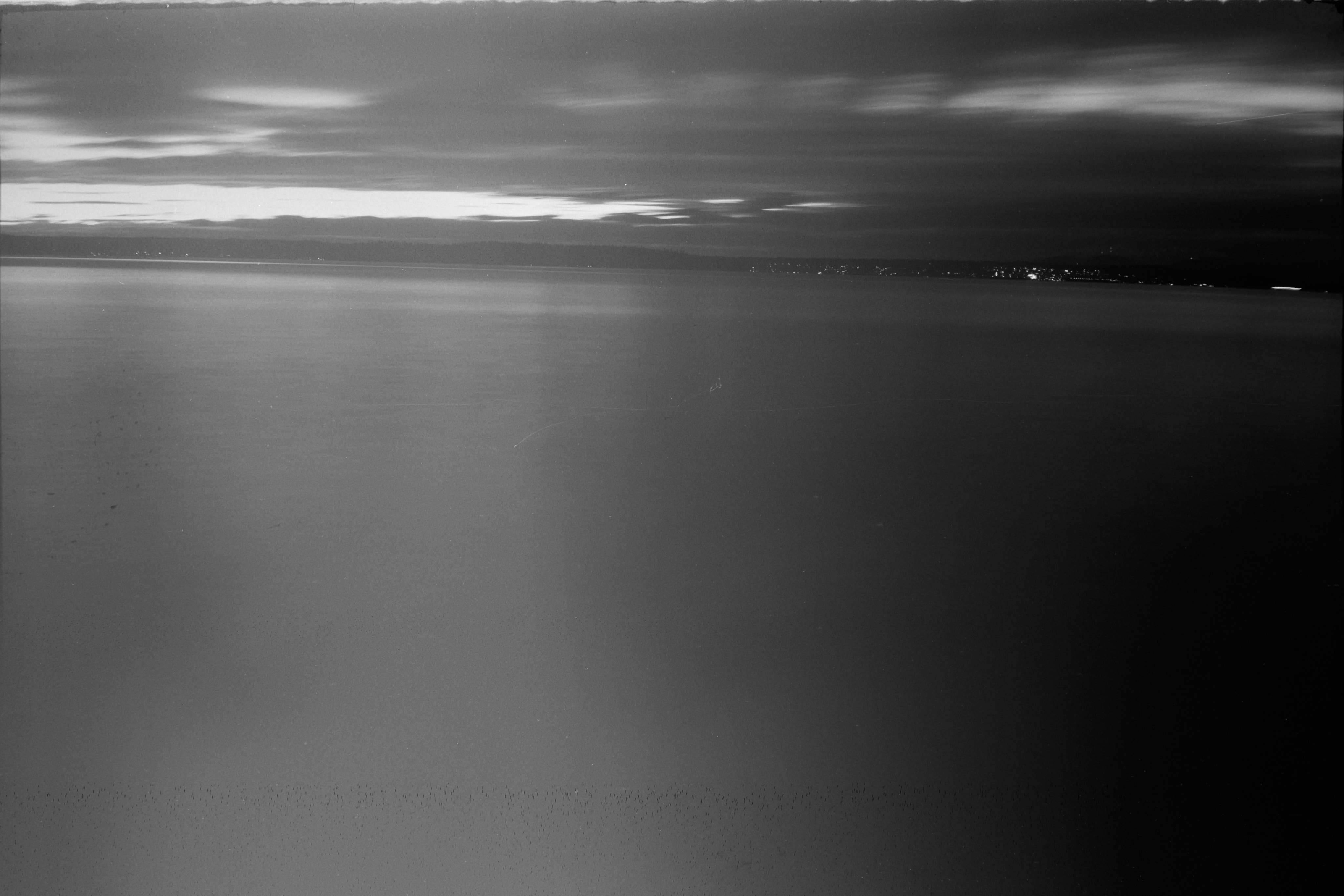
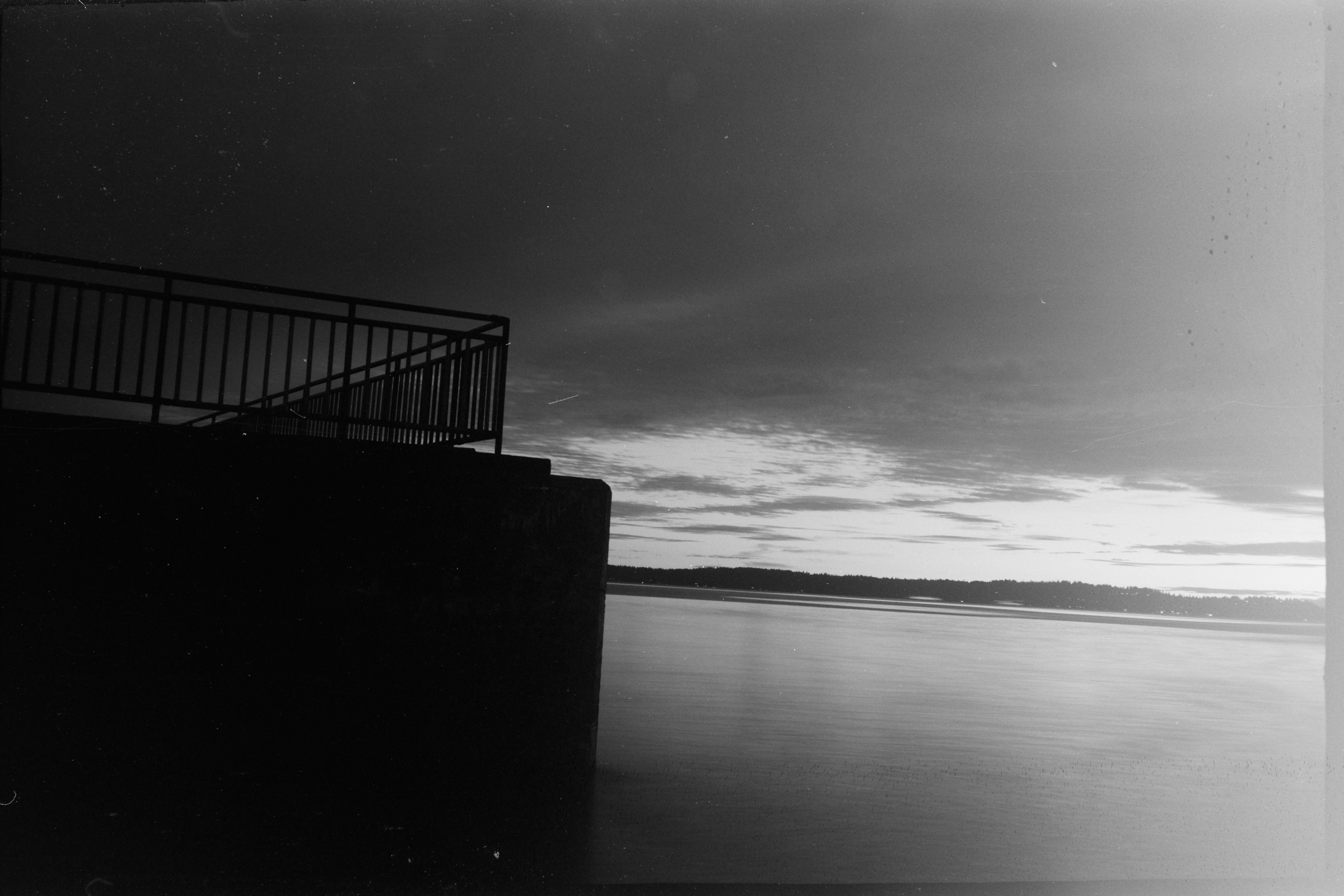
I didn’t do any research going in. Turns out the film is not really forgiving in terms of exposure latitude. In this next shot, for example, I seem to have exposed OK enough for the brightly lit areas, but certainly not for the person in the shadow on the left side.
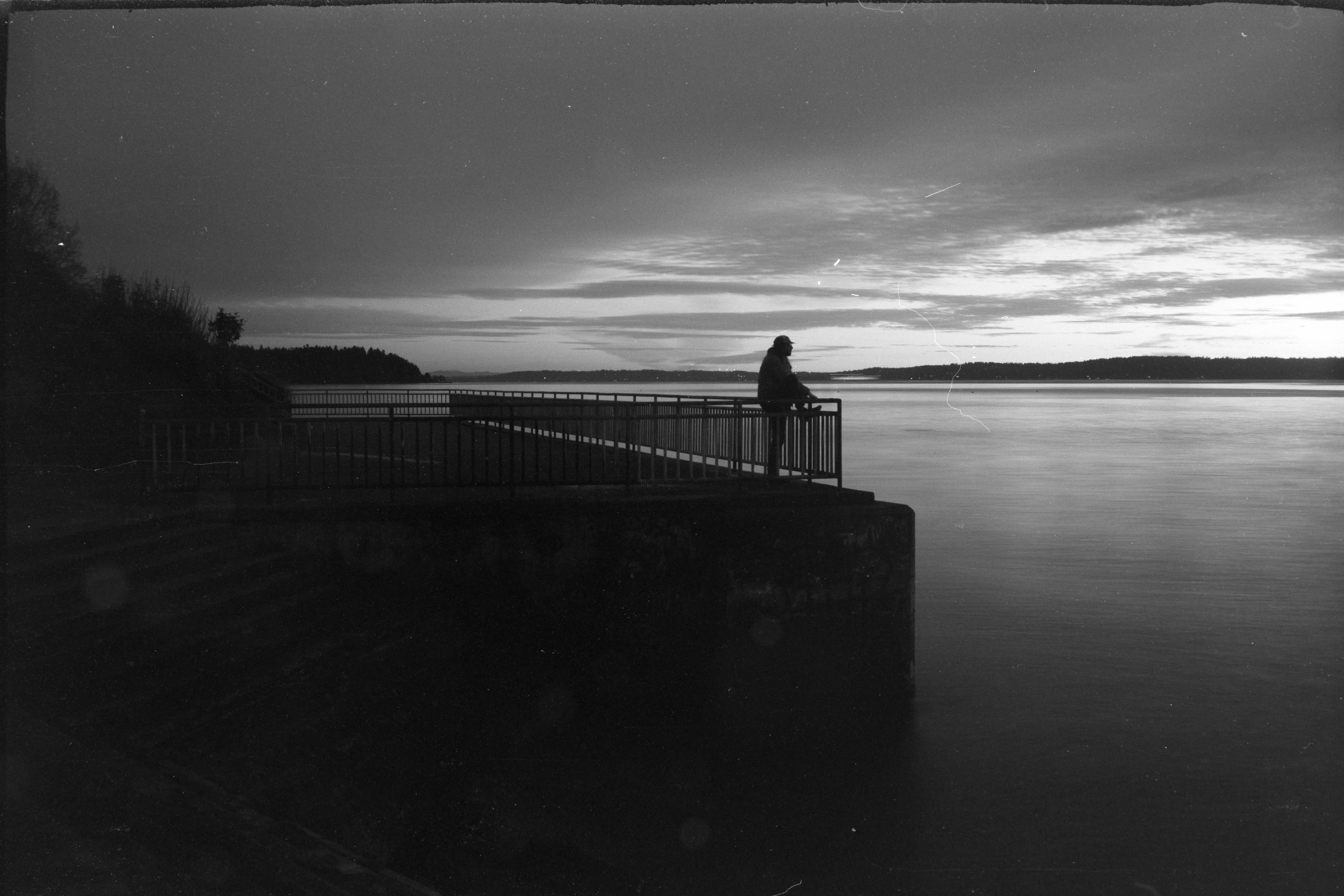
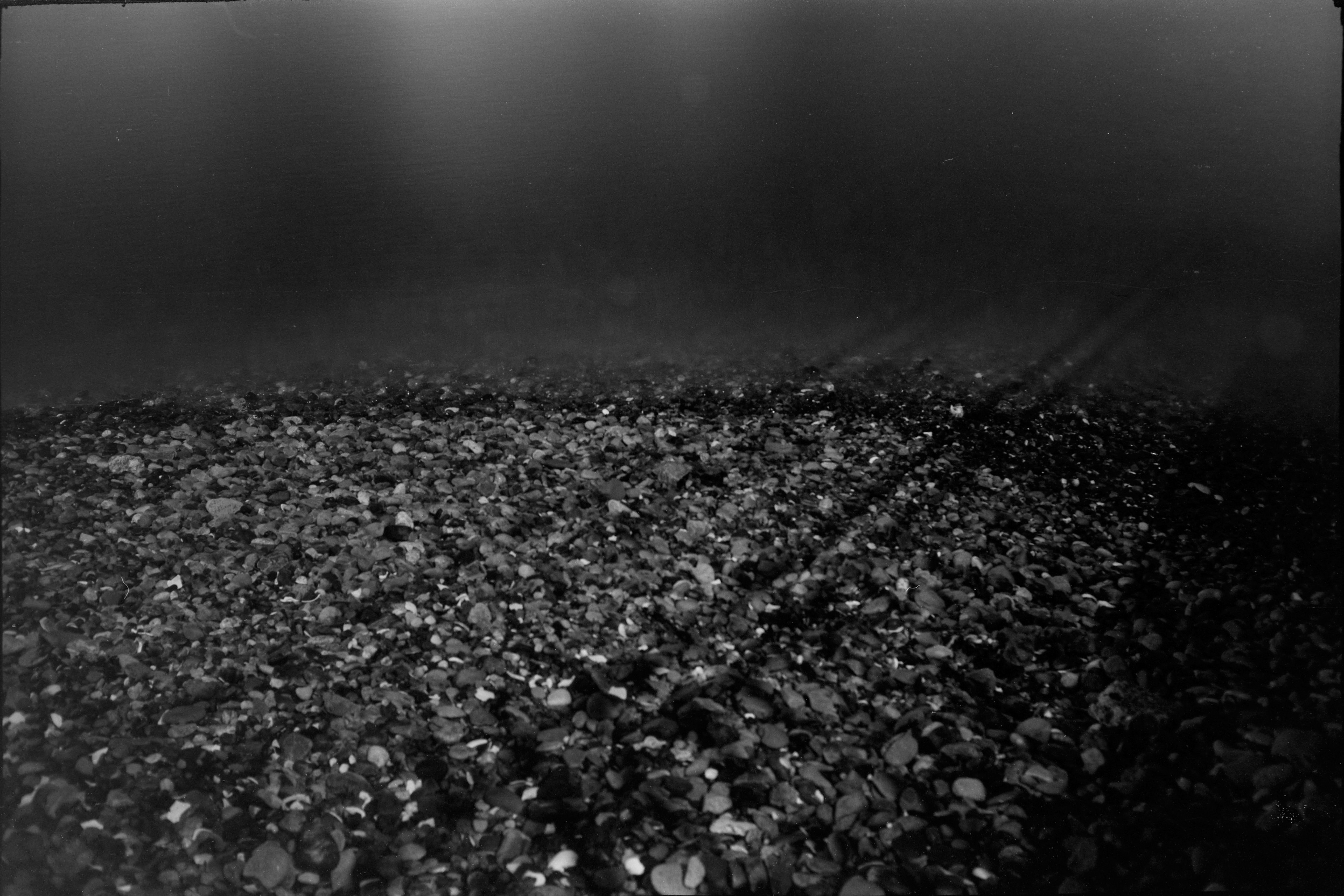
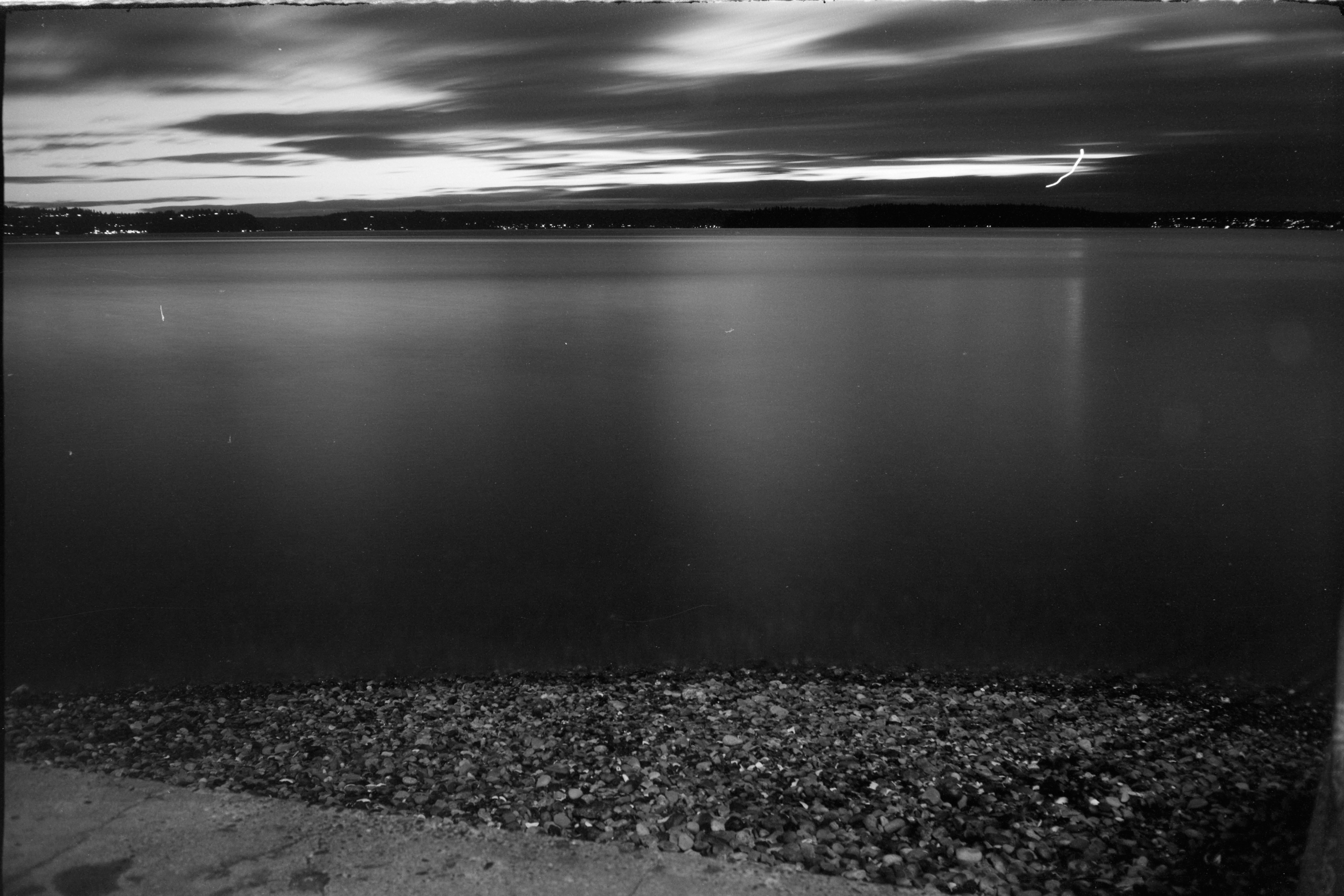
By this point in the evening, some of these exposures were several minutes long. A quick google seemed to suggest that Svema64 had excellent “reciprocity,” meaning that I didn’t need to multiply long exposure times by some extra factor because math, physics, optics, and/or chemicals break down. But then again, I’m not entirely sure that’s the case.
This next photograph is a ten minute long exposure, during which Chelsea & I moved around at various times, while both being in the frame. It is a photography trick that a long enough exposure can make people disappear, but I think our presence is still “felt.”
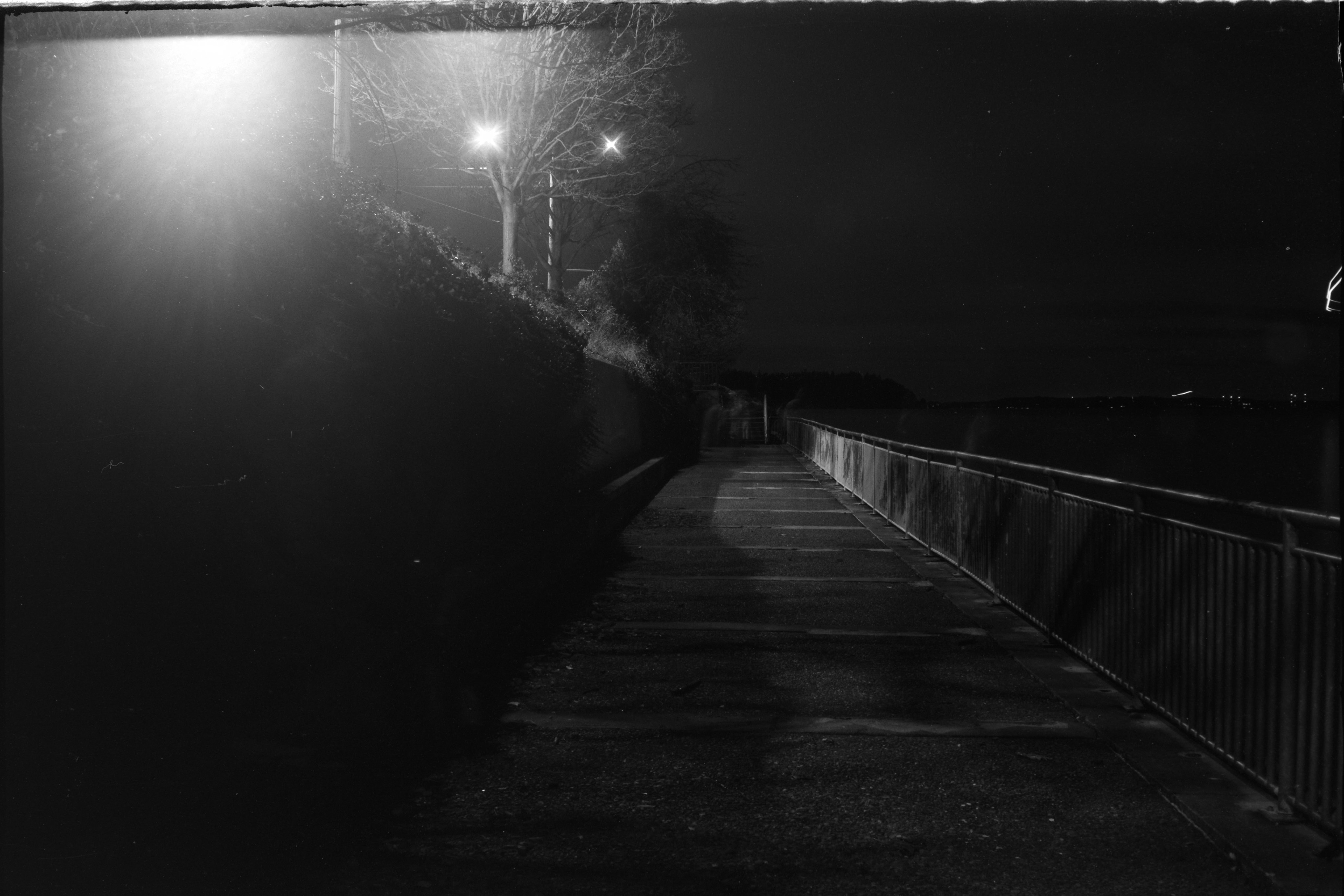
The weird X-shapes in the lights are caused by the Ricoh’s aperture blades. There are four of them, and they are remarkably square when stopped down. And finally, I’ve engineered a situation where I can see their
The following day around noontime, I said “fuck it, I don’t want to have a roll of ISO 64 film sitting in my camera in Seattle in February” and shot the rest of the frames over on Alki Beach.
This time, handheld. The results were a little more of a mixed bag.
Still, some samples:
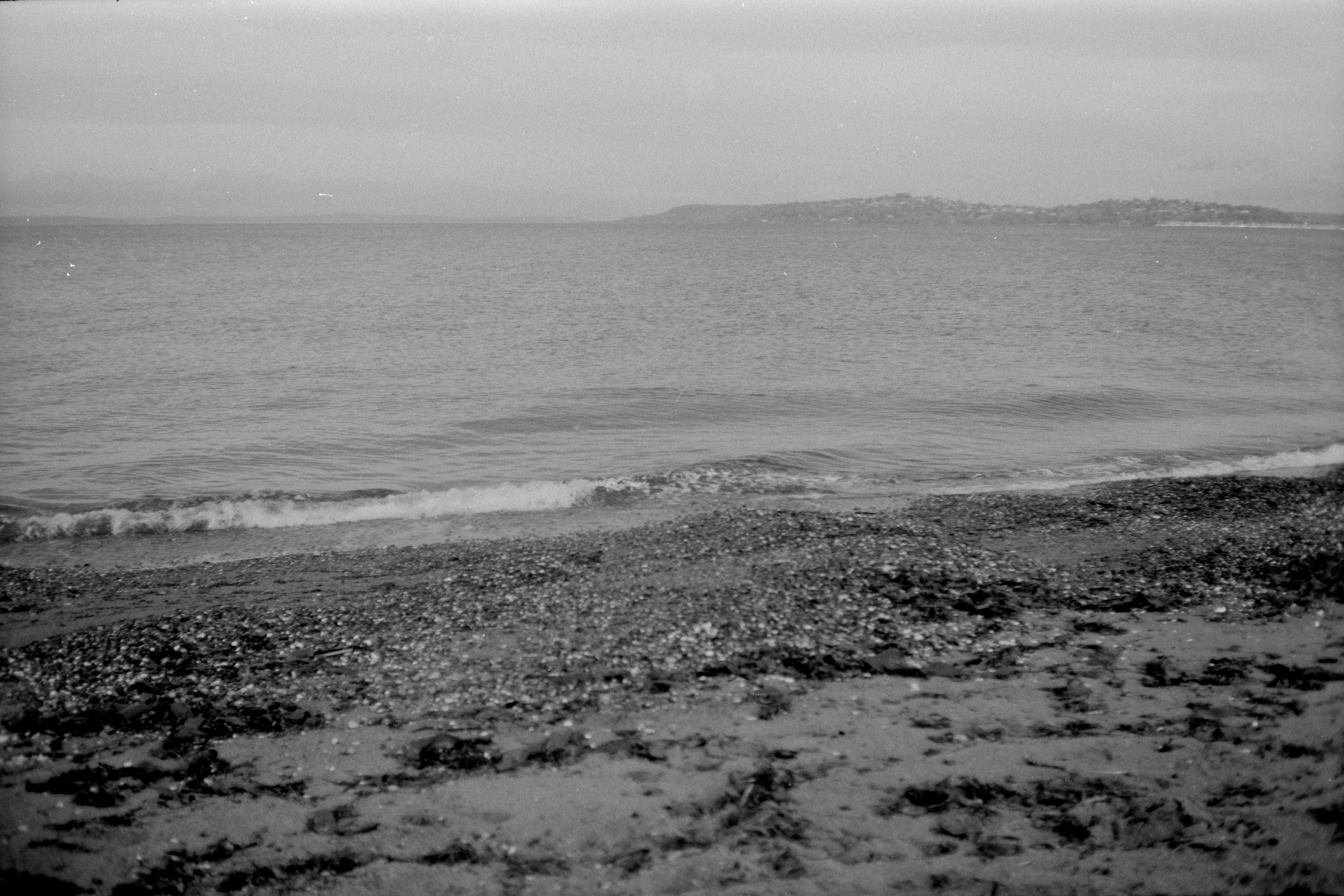
Looking at this in the daytime, and reflecting on it after shooting a lot more rolls of black and white – I have a lot more grain in these shots, more than I’d expect for a slower film. Perhaps I overexposed it, and thus, added “character.”
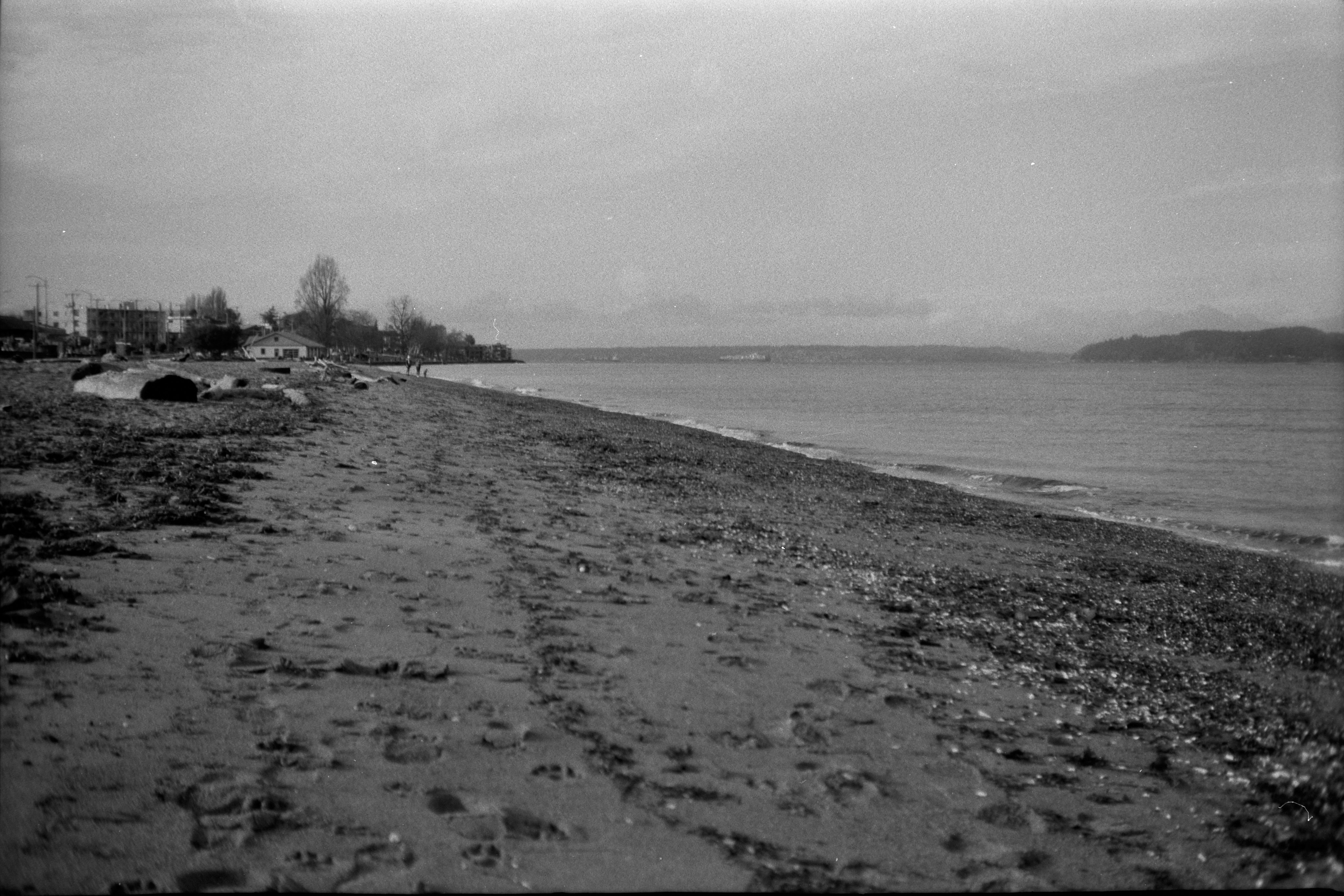
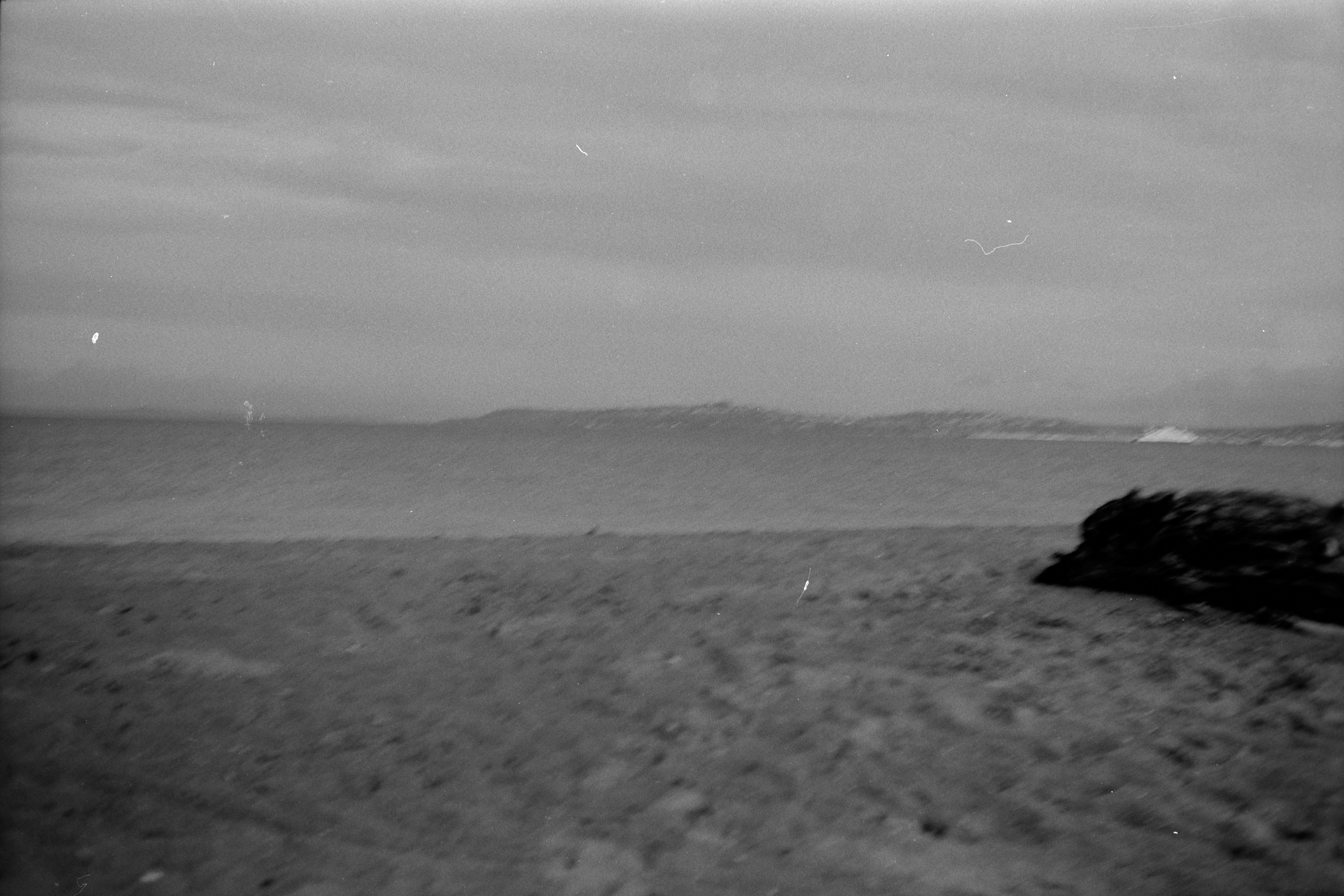
Additionally, I needed to work more on my technique for hand-holding the Ricoh 35 ZF at slower shutter speeds. There is a trick – and it is to push down on the shutter release slowly. It has a long travel. If I press on it too rapidly, I get blur at speeds that should be stable.
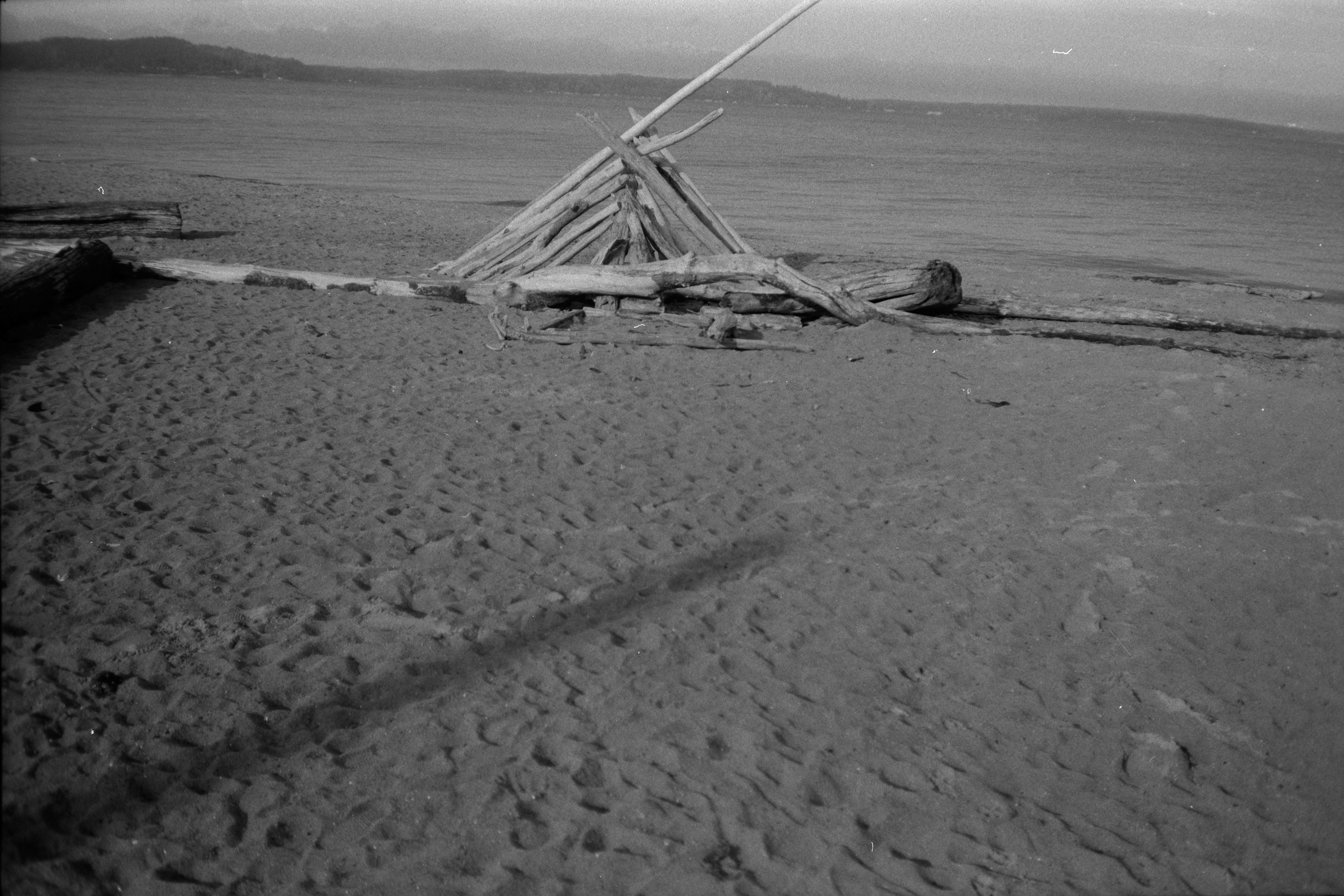
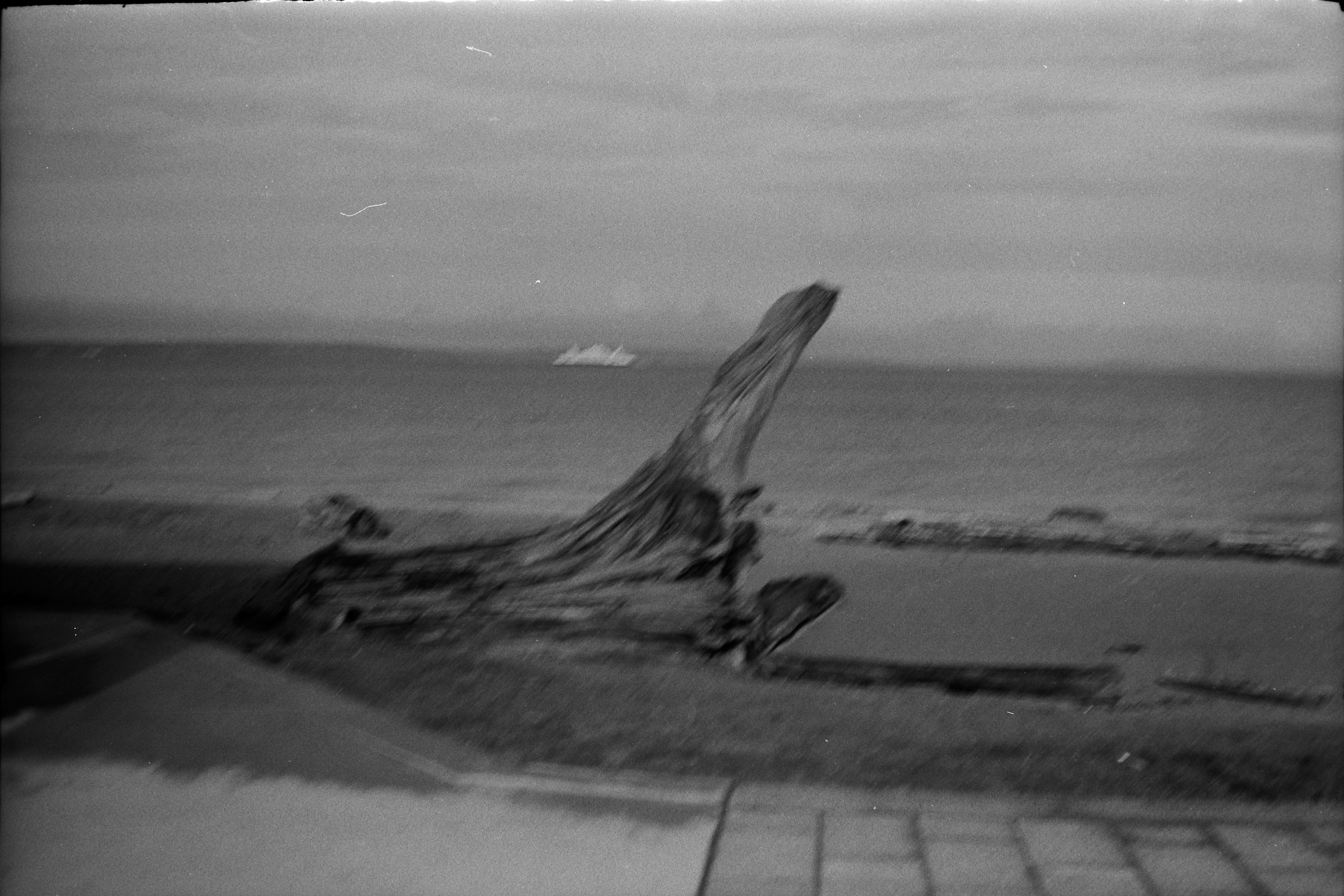
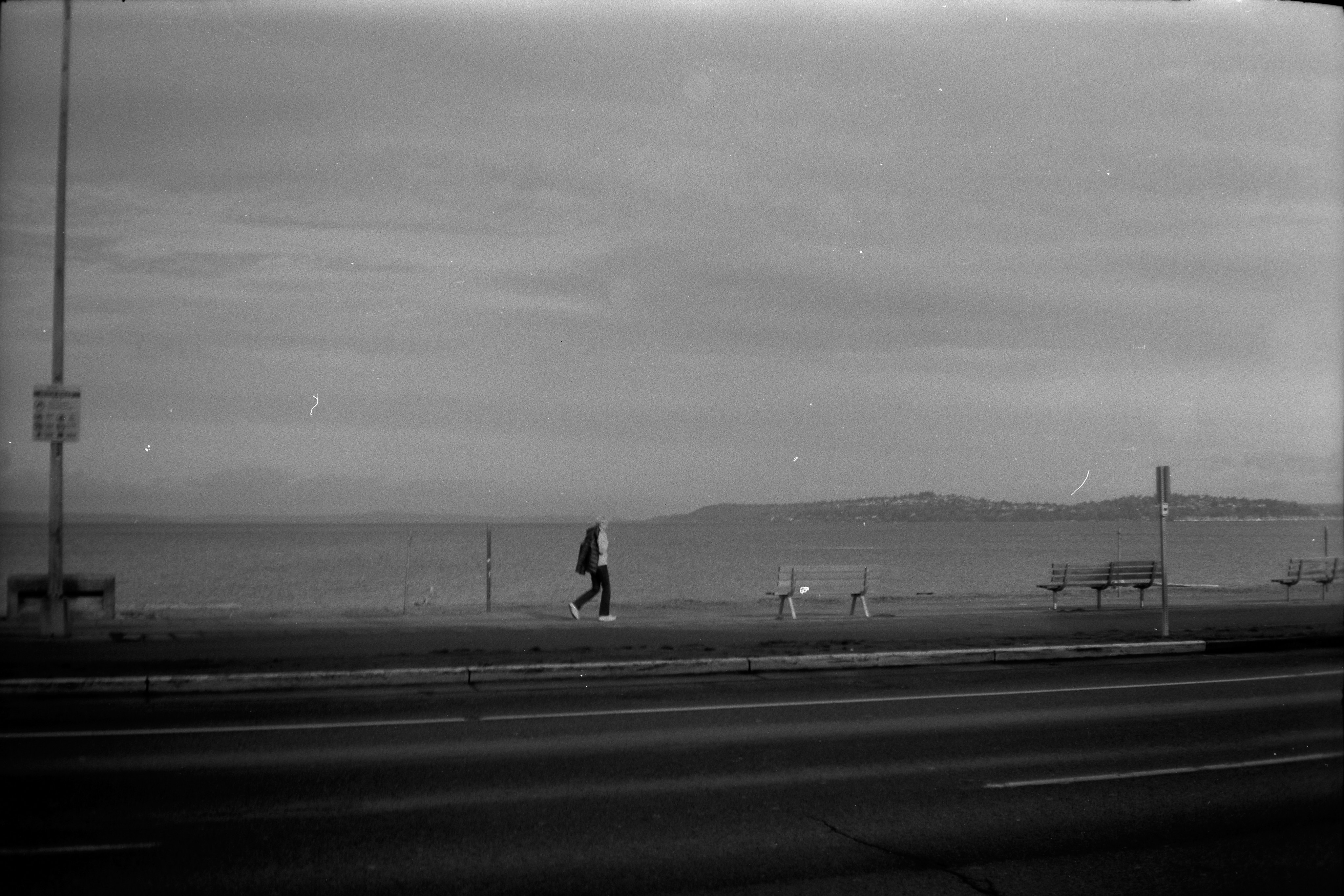
Some of the images I’ve shared, I find really cool. In some cases, despite or because of their flaws. And some of them are just some examples of things I’d otherwise excise. Things I enjoyed taking, but which I certainly wouldn’t save or cherish among my best photographic efforts.
I had fun trying this film, and I found the results delightful. There’s something really nice about the smoothness of the rendering, and I do really like the contrast, even if it wasn’t always a perfect match for my scenes.
This post was part of a series:
Thanks for reading!
If you enjoyed this post, you might enjoy these 5 similar posts:
- 2023-10-31 —Shooting a Roll of Film Washi A - Motion Picture Leader with an ISO of 6
- 2022-12-20 —My First Frames with a Soviet Medium Format Film Camera
- 2022-12-23 —The Ricoh 35 ZF: A $5 Film Camera Find
- 2023-11-07 —September 2023 in Review - Around & About
- 2022-03-30 —52 Frames (March 2022)